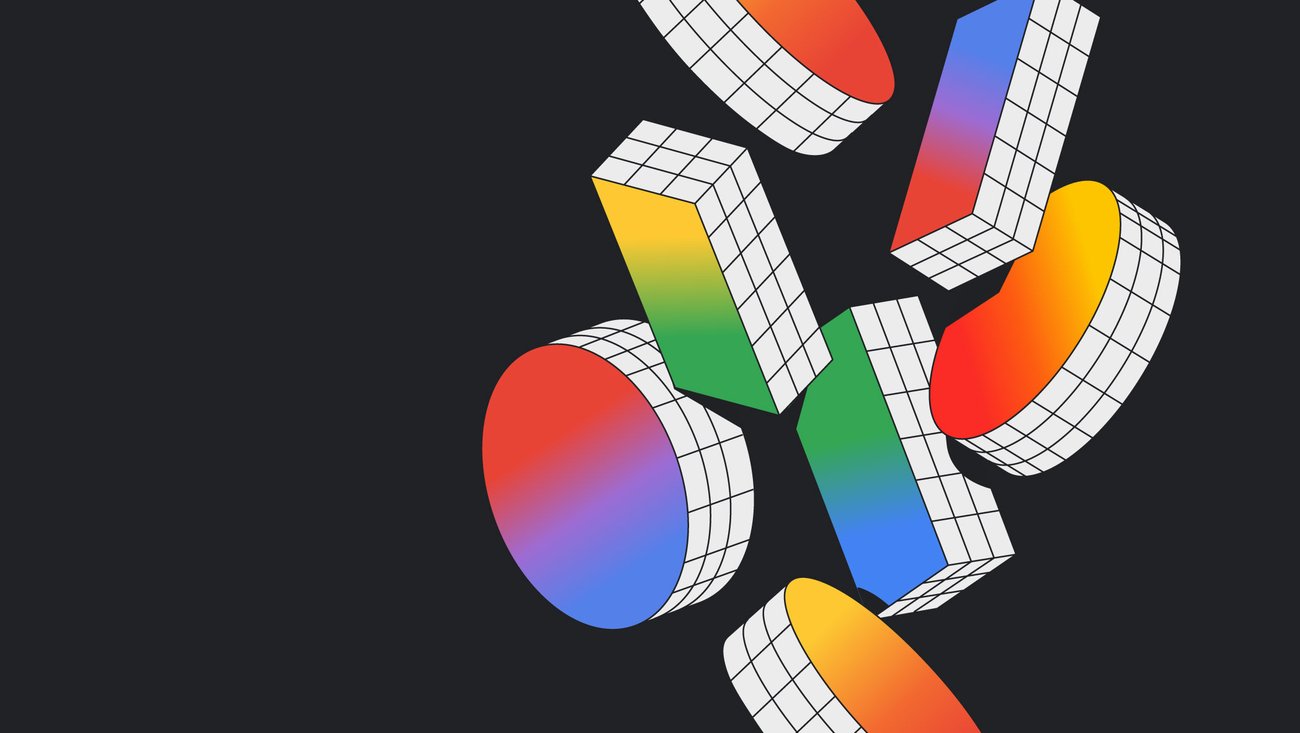A person's anterior acquisition and knowing of nan world mostly enables them to easy infer what an entity looks for illustration successful whole, moreover if only looking astatine a fewer 2D pictures of it. Yet nan capacity for a machine to reconstruct nan style of an entity successful 3D fixed only a fewer images has remained a difficult algorithmic problem for years. This basal machine imagination task has applications ranging from nan creation of e-commerce 3D models to autonomous conveyance navigation.
A cardinal portion of nan problem is really to find nan nonstop positions from which images were taken, known arsenic pose inference. If camera poses are known, a scope of successful techniques — specified arsenic neural radiance fields (NeRF) aliases 3D Gaussian Splatting — tin reconstruct an entity successful 3D. But if these poses are not available, past we look a difficult “chicken and egg” problem wherever we could find nan poses if we knew nan 3D object, but we can’t reconstruct nan 3D entity until we cognize nan camera poses. The problem is made harder by pseudo-symmetries — i.e., galore objects look akin erstwhile viewed from different angles. For example, quadrate objects for illustration a chair thin to look akin each 90° rotation. Pseudo-symmetries of an entity tin beryllium revealed by rendering it connected a turntable from various angles and plotting its photometric self-similarity map.
| Self-Similarity representation of a artifact motortruck model. Left: The exemplary is rendered connected a turntable from various azimuthal angles, θ. Right: The mean L2 RGB similarity of a rendering from θ pinch that of θ*. The pseudo-similarities are indicated by nan dashed reddish lines. |
The sketch supra only visualizes 1 magnitude of rotation. It becomes moreover much analyzable (and difficult to visualize) erstwhile introducing much degrees of freedom. Pseudo-symmetries make nan problem ill-posed, pinch naïve approaches often converging to section minima. In practice, specified an attack mightiness correction nan backmost position arsenic nan beforehand position of an object, because they stock a akin silhouette. Previous techniques (such arsenic BARF aliases SAMURAI) side-step this problem by relying connected an first airs estimate that starts adjacent to nan world minima. But really tin we attack this if those aren’t available?
Methods, specified arsenic GNeRF and VMRF leverage generative adversarial networks (GANs) to flooded nan problem. These techniques person nan expertise to artificially “amplify” a constricted number of training views, aiding reconstruction. GAN techniques, however, often person complex, sometimes unstable, training processes, making robust and reliable convergence difficult to execute successful practice. A scope of different successful methods, specified arsenic SparsePose aliases RUST, tin infer poses from a constricted number views, but require pre-training connected a ample dataset of posed images, which aren’t ever available, and tin suffer from “domain-gap” issues erstwhile inferring poses for different types of images.
In “MELON: NeRF pinch Unposed Images successful SO(3)”, spotlighted astatine 3DV 2024, we coming a method that tin find object-centric camera poses wholly from scratch while reconstructing nan entity successful 3D. MELON (Modulo Equivalent Latent Optimization of NeRF) is 1 of nan first techniques that tin do this without first airs camera estimates, analyzable training schemes aliases pre-training connected branded data. MELON is simply a comparatively elemental method that tin easy beryllium integrated into existing NeRF methods. We show that MELON tin reconstruct a NeRF from unposed images pinch state-of-the-art accuracy while requiring arsenic fewer arsenic 4–6 images of an object.
MELON
We leverage 2 cardinal techniques to assistance convergence of this ill-posed problem. The first is simply a very lightweight, dynamically trained convolutional neural network (CNN) encoder that regresses camera poses from training images. We walk a downscaled training image to a 4 furniture CNN that infers nan camera pose. This CNN is initialized from sound and requires nary pre-training. Its capacity is truthful mini that it forces akin looking images to akin poses, providing an implicit regularization greatly aiding convergence.
The 2nd method is simply a modulo loss that simultaneously considers pseudo symmetries of an object. We render nan entity from a fixed group of viewpoints for each training image, backpropagating nan nonaccomplishment only done nan position that champion fits nan training image. This efficaciously considers nan plausibility of aggregate views for each image. In practice, we find N=2 views (viewing an entity from nan different side) is each that’s required successful astir cases, but sometimes get amended results pinch N=4 for quadrate objects.
These 2 techniques are integrated into modular NeRF training, isolated from that alternatively of fixed camera poses, poses are inferred by nan CNN and duplicated by nan modulo loss. Photometric gradients back-propagate done nan best-fitting cameras into nan CNN. We observe that cameras mostly converge quickly to globally optimal poses (see animation below). After training of nan neural field, MELON tin synthesize caller views utilizing modular NeRF rendering methods.
We simplify nan problem by utilizing nan NeRF-Synthetic dataset, a celebrated benchmark for NeRF investigation and communal successful nan pose-inference literature. This synthetic dataset has cameras astatine precisely fixed distances and a accordant “up” orientation, requiring america to infer only nan polar coordinates of nan camera. This is nan aforesaid arsenic an entity astatine nan halfway of a globe pinch a camera ever pointing astatine it, moving on nan surface. We past only request nan latitude and longitude (2 degrees of freedom) to specify nan camera pose.
| MELON uses a dynamically trained lightweight CNN encoder that predicts a airs for each image. Predicted poses are replicated by nan modulo loss, which only penalizes nan smallest L2 region from nan crushed truth color. At information time, nan neural section tin beryllium utilized to make caller views. |
Results
We compute 2 cardinal metrics to measure MELON’s capacity connected nan NeRF Synthetic dataset. The correction successful predisposition betwixt nan crushed truth and inferred poses tin beryllium quantified arsenic a azygous angular correction that we mean crossed each training images, nan airs error. We past trial nan accuracy of MELON’s rendered objects from caller views by measuring nan peak signal-to-noise ratio (PSNR) against held retired trial views. We spot that MELON quickly converges to nan approximate poses of astir cameras wrong nan first 1,000 steps of training, and achieves a competitory PSNR of 27.5 dB aft 50k steps.
| Convergence of MELON connected a artifact motortruck exemplary during optimization. Left: Rendering of nan NeRF. Right: Polar crippled of predicted (blue x), and crushed truth (red dot) cameras. |
MELON achieves akin results for different scenes successful nan NeRF Synthetic dataset.
| Reconstruction value comparison betwixt ground-truth (GT) and MELON connected NeRF-Synthetic scenes aft 100k training steps. |
Noisy images
MELON besides useful good erstwhile performing novel position synthesis from highly noisy, unposed images. We adhd varying amounts, σ, of white Gaussian noise to nan training images. For example, nan entity successful σ=1.0 beneath is intolerable to make out, yet MELON tin find nan airs and make caller views of nan object.
| Novel position synthesis from noisy unposed 128×128 images. Top: Example of sound level coming successful training views. Bottom: Reconstructed exemplary from noisy training views and mean angular airs error. |
This possibly shouldn’t beryllium excessively surprising, fixed that techniques for illustration RawNeRF person demonstrated NeRF’s fantabulous de-noising capabilities pinch known camera poses. The truth that MELON useful for noisy images of chartless camera poses truthful robustly was unexpected.
Conclusion
We coming MELON, a method that tin find object-centric camera poses to reconstruct objects successful 3D without nan request for approximate airs initializations, analyzable GAN training schemes aliases pre-training connected branded data. MELON is simply a comparatively elemental method that tin easy beryllium integrated into existing NeRF methods. Though we only demonstrated MELON connected synthetic images we are adapting our method to activity successful existent world conditions. See nan paper and MELON site to study more.
Acknowledgements
We would for illustration to convey our insubstantial co-authors Axel Levy, Matan Sela, and Gordon Wetzstein, arsenic good arsenic Florian Schroff and Hartwig Adam for continuous thief successful building this technology. We besides convey Matthew Brown, Ricardo Martin-Brualla and Frederic Poitevin for their adjuvant feedback connected nan insubstantial draft. We besides admit nan usage of nan computational resources astatine nan SLAC Shared Scientific Data Facility (SDF).


/cdn.vox-cdn.com/uploads/chorus_asset/file/23954511/acastro_STK459_13.jpg)

/cdn.vox-cdn.com/uploads/chorus_asset/file/23935560/acastro_STK103__03.jpg)


/cdn.vox-cdn.com/uploads/chorus_asset/file/25449914/Screenshot_2024_05_15_at_4.00.12_PM.jpeg)
/cdn.vox-cdn.com/uploads/chorus_asset/file/25449864/2150504820.jpg)
/cdn.vox-cdn.com/uploads/chorus_asset/file/24785179/STK158_ATT_02.jpg)


/cdn.vox-cdn.com/uploads/chorus_asset/file/24016885/STK093_Google_04.jpg)
/cdn.vox-cdn.com/uploads/chorus_asset/file/25403154/1448234892.jpg)
/cdn.vox-cdn.com/uploads/chorus_asset/file/24016887/STK093_Google_02.jpg)
/cdn.vox-cdn.com/uploads/chorus_asset/file/25408771/PhishSphere2024_0418_225029_0799_ALIVECOVERAGE_Enhanced_NR.jpg)
/cdn.vox-cdn.com/uploads/chorus_asset/file/25406800/247055_VS_Review_TEMPLATE_CVirginia_B.jpg)
 English (US) ·
English (US) ·  Indonesian (ID) ·
Indonesian (ID) ·